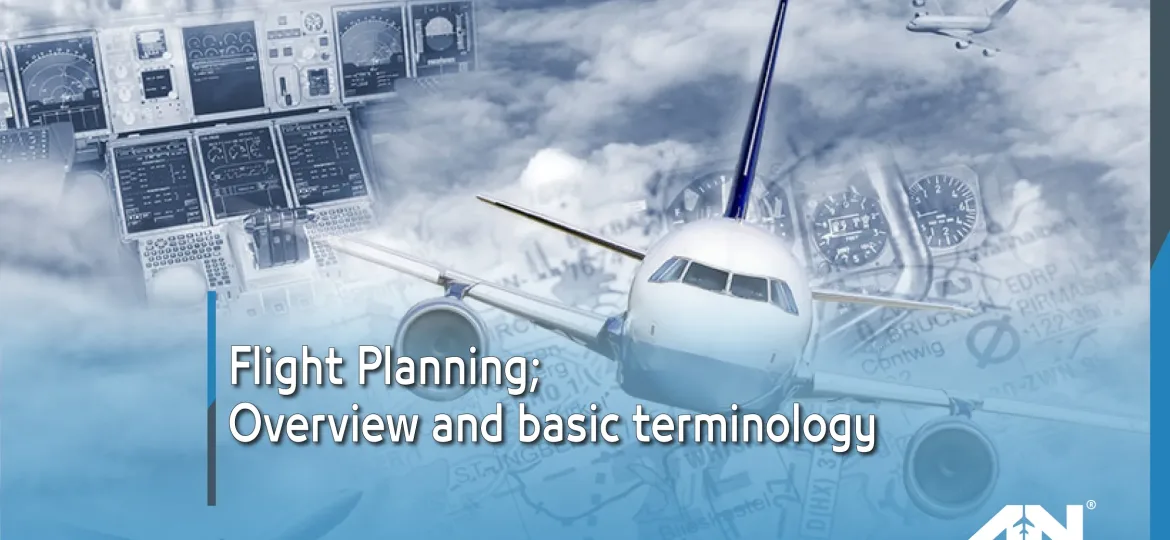
Efficient and accurate flight planning is the backbone of aviation operations, whether for commercial airlines, private jets, or cargo transport. A well-executed flight plan ensures safety, fuel efficiency, and adherence to air traffic control (ATC) regulations. For those unfamiliar with this critical process, this blog explores the fundamentals of flight planning, breaking down its purpose, components, and common terminology used by pilots and planners worldwide.
What is Flight Planning?
Flight planning is the detailed process of creating a route for an aircraft before departure. This involves calculating various factors such as weather conditions, fuel requirements, altitude selection, and air traffic restrictions to determine the most efficient and safest path from departure to arrival.
Every flight plan must be filed with the relevant air traffic control authority before takeoff to coordinate movements in controlled airspace and ensure the safety of all aircraft in the skies.
Why is Flight Planning Important?
Proper flight planning is essential for:
- Safety: By accounting for weather patterns, terrain, and restricted airspace, flight plans minimize risks during a flight.
- Fuel Efficiency: Efficient routes help conserve fuel, reducing costs and environmental impact.
- Regulatory Compliance: Filing flight plans ensures the aircraft adheres to aviation regulations and coordinates with ATC.
- Time Management: Optimal routing can save time and reduce delays.
Components of a Flight Plan
A flight plan is not just a simple map or itinerary—it’s a comprehensive document that includes the following components:
- Route Information: This details the path the aircraft will take, including waypoints, airways, and alternate routes.
- Flight Level (Altitude): Selected altitude(s) based on weather, fuel efficiency, and airspace restrictions.
- Estimated Time En Route (ETE): The expected flight duration from takeoff to landing.
- Fuel Requirements: Calculations include fuel for the planned route, reserves, alternate destinations, and contingencies.
- Weather Data: Current and forecasted conditions at the departure point, en route, and arrival destination.
- Aircraft Performance Data: Information on the aircraft’s capabilities, such as range and speed.
Basic Terminology in Flight Planning
Understanding some common terms can make flight planning more accessible:
- Waypoint: A specific geographical location used as a reference point during a flight.
- Airways: Predefined routes in the sky that aircraft follow, similar to highways on the ground.
- Alternate Airport: A backup airport designated in case the destination airport is unavailable due to weather or other factors.
- Cruising Altitude: The cruising altitude at which the aircraft will fly for the majority of the journey.
- Flight Plan Filing: Submitting the completed flight plan to ATC authorities for approval.
- NOTAM (Notice to Airmen): Alerts issued to pilots about changes or hazards in the airspace or airports along the route.
- VFR (Visual Flight Rules): A set of regulations allowing pilots to fly based on visual cues rather than instruments.
- IFR (Instrument Flight Rules): Rules that require pilots to navigate using instruments, typically in poor visibility conditions.
The Flight Planning Process
The process typically follows these steps:
- Route Selection: Choosing the best route based on weather, air traffic, and airspace restrictions.
- Weather Analysis: Reviewing forecasts for turbulence, storms, and other conditions that could affect the flight.
- Fuel Calculation: Estimating the required fuel for the journey, including reserves.
- Air Traffic Coordination: Filing the plan with ATC to ensure it aligns with airspace usage and traffic patterns.
- Pre-Flight Briefing: Reviewing the finalized plan with the crew to ensure everyone understands the route and contingencies.
Modern Tools for Flight Planning
Flight planning has evolved significantly with advancements in technology. Tools such as digital flight planning software and automated systems simplify the process, providing real-time data on weather, air traffic, and route optimization. These tools are widely used by both private pilots and major airlines to streamline operations.
Additionally, online platforms allow pilots to access pre-flight briefings, file flight plans, and receive updates on changes in airspace or weather conditions, even during the flight.
Challenges in Flight Planning
Flight planning isn’t without its challenges. Variables such as unexpected weather changes, restricted airspace, and mechanical issues can complicate the process. This is why flexibility and contingency planning are vital components of a successful flight plan.
Moreover, international flights introduce additional complexity, requiring coordination across multiple ATC authorities and adherence to varying national regulations.
Conclusion
Flight planning is an essential part of aviation that ensures the safety, efficiency, and compliance of every journey. By combining technical expertise, real-time data, and advanced tools, flight planners create detailed strategies to navigate the skies seamlessly.
Whether you’re a private pilot or part of a commercial airline, understanding the basics of flight planning and its terminology is critical for smooth operations. As technology continues to evolve, this process will only become more streamlined, further enhancing the reliability of air travel.

